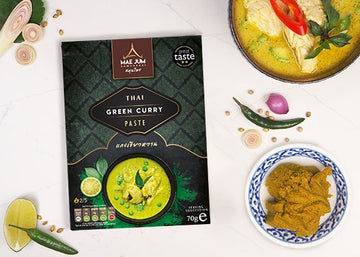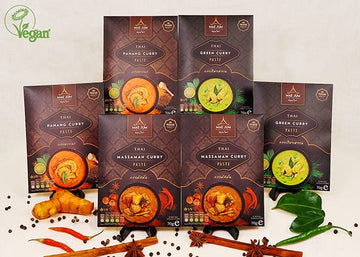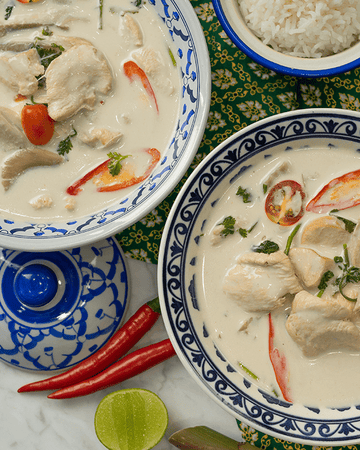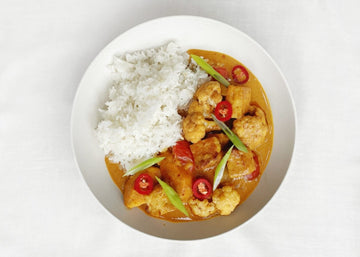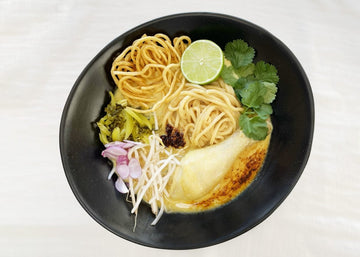There’s something magical about Pad Thai. Sweet, savoury, tangy, and delightfully nutty - it’s a dish that unites flavours and people around the world. Whether you’ve savoured it from a Bangkok street cart or tried it in your home kitchen, Pad Thai is more than just noodles, it’s a symbol of Thai identity and culinary ingenuity.
In this post, we’ll explore the fascinating story behind Thailand’s national dish, and show you how to cook authentic Pad Thai at home with just a few simple ingredients and a little help from Mae Jum’s traditional Pad Thai paste.
Contents
Brief History of Pad Thai
Pad Thai as we know it today emerged in the mid-20th century, during a time of national modernisation. In the 1930s and '40s, then Prime Minister Plaek Phibunsongkhram promoted Pad Thai as a patriotic dish—part of a campaign to modernise Thai cuisine, promote rice noodle consumption, and unify the nation under a shared cultural identity.
Interestingly, while Pad Thai is globally recognised, it’s actually a relatively modern invention with Chinese-inspired roots, owing to the stir-fry technique and use of noodles. Yet over time, Thai cooks made it uniquely their own—adding tamarind, palm sugar, fish sauce, lime, and chilli to create that signature sweet-sour-salty flavour profile we all love.
What Makes Pad Thai So Special?
Pad Thai’s popularity lies in its perfectly balanced flavour and the joyful way it’s assembled. It’s a dish of harmony—combining soft rice noodles, crunchy peanuts, fresh bean sprouts, and tender proteins (like prawns, chicken, or tofu) all tossed in a rich, tamarind-based sauce.
The combination of textures and tastes makes every bite exciting. And best of all—it’s fast, adaptable, and deeply satisfying.
Cooking Pad Thai at Home - 7 Tips for Success
Making Pad Thai from scratch can seem a little daunting at first, but once you understand a few key principles, it’s surprisingly quick and endlessly rewarding. Here are some essential tips to help you master this much-loved dish with confidence.
1. Soak, Don’t Boil Your Noodles
It’s a common mistake to boil rice noodles like pasta—but for Pad Thai, soaking is the way to go. Place the noodles in warm water for around 20–30 minutes, or until they become soft and flexible but still slightly firm to the bite. This prevents them from overcooking and sticking together in the wok and gives you that perfect texture Pad Thai - springy and tender.
2. Prep Everything Before You Start
Pad Thai cooks incredibly fast—once the wok is hot, there’s no time to be chopping spring onions or cracking eggs. Lay out all your ingredients in advance: soaked noodles, protein, vegetables, sauce, garnishes. Having everything at your fingertips not only makes the process smoother but helps you stay in control of the heat.
3. Get Your Wok Hot—Really Hot
A hot wok is essential for a great stir-fry. It sears ingredients quickly, adds smoky depth, and stops things from becoming soggy. Use a neutral oil like groundnut or sunflower, and don’t overcrowd the pan—if you're making a large batch, cook in portions.
4. Balance is Key
Pad Thai is all about harmony—sweet, sour, salty, and savoury. Mae Jum’s Pad Thai paste is the flavour base, you'll need to turn it into a sauce by adding sugar and water. Seasoning to taste is simple: Add a splash more fish sauce for saltiness, extra palm sugar for sweetness, or a squeeze of lime to lift the dish right at the end for a touch of sour.
5. Egg First or Last? Your Call!
Some cooks scramble the egg first and set it aside, others push the noodles aside and crack it in halfway. Both methods work but we prefer the latter! The key is not to overcook it—just stir gently until softly set, so it adds silkiness without drying out.
6. Add Crunch Right at the End
To keep your bean sprouts crisp and your peanuts crunchy, always stir them in at the last moment or sprinkle them on top when serving. This preserves the contrast of textures that makes Pad Thai so satisfying.
7. Finish with Freshness
A good Pad Thai should hit you with layers of flavour—and then a fresh, zesty finish. Don’t skip the garnishes! A wedge of lime, chopped coriander, extra peanuts, and a sprinkle of chilli flakes bring brightness and a personal touch to your dish.
